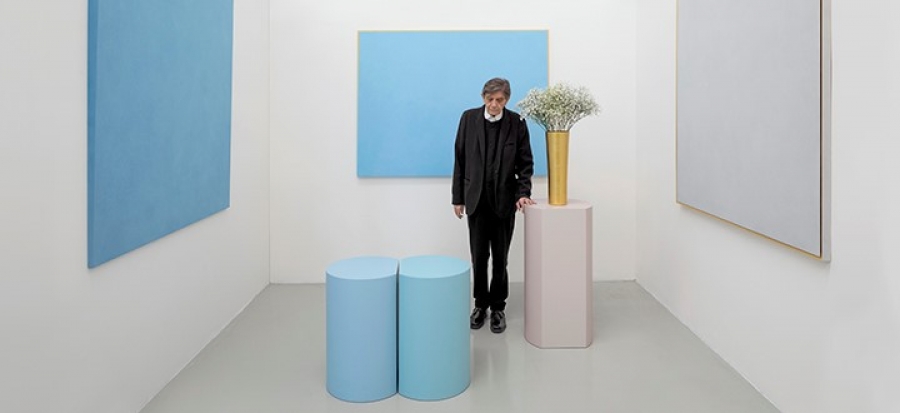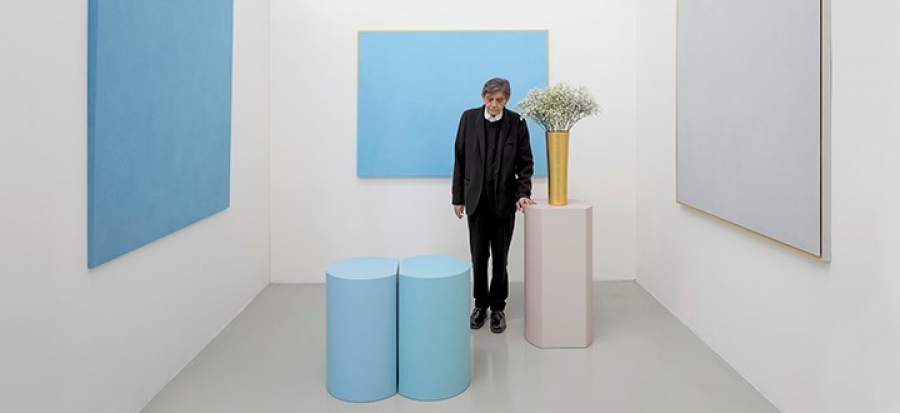[ad_1]

Ettore Spalletti.
©WERNER J. HANNAPPEL
Ettore Spalletti, who engineered a slow, serene method of painting near-monochromes, has died at 79, according to the Italian newspaper Repubblica. A cause of death was not immediately reported.
“He was able to love color, matter, dust, light,” Carolyn Christov-Bakargiev, the director of the Castello di Rivoli museum in Turin, Italy, wrote on Twitter. “To touch them, and be touched by them, delicately, quietly. It is sad. Again and again. The wind in a chapel, a silver cup left in a garden.”
Spalletti’s process for painting his cool-colored canvases often involved placing layers of the same paint tone on top of one another repeatedly. The passage of time became an essential part of his process, and he considered his work, which he often did on shaped canvases that were hung at uneven angles, to be a merger of techniques derived from multiple mediums, including painting and sculpture. The results are placid canvases in shades of pink, grey, and blue—tones that he based on what he saw around his studio in the Abruzzo region of Italy.
“At times, a yellow can lead me so far away into the light that I don’t even know whether I’m an abstract or figurative painter,” Spalletti told Studio International last year. “I sometimes like to describe myself as a figurative painter because color can always take me to a different place, but it’s always a place inside me, with its own rules and reasons. I often give my works figurative names.”
Born in 1940 and having begun working during the 1970s, Spalletti adopted methods that were initially quite different from his Arte Povera colleagues, whose work meditated on the changing relationship between humans and nature in postwar Italy, often via oddball and highly conceptual combinations of manmade and natural objects. His art comes closer to what was being made in American by Minimalists, Post-Minimalists, and their predecessors, such as Ellsworth Kelly and Anne Truitt. That approach didn’t keep Spalletti from collaborating with more conceptually oriented artists, however—he produced works with Joseph Kosuth, Haim Steinbach, and Maurizio Cattelan over the years.
Though Spalletti is not widely known in the United States (he has not had a New York solo show in more than three decades), he has been considered essential to the development of Italian contemporary art. In 2014 his work was accorded a three-part retrospective across three of Italy’s most high-profile institutions—MAXXI in Rome, the Museo d’Arte Contemporanea Donnaregina in Naples, and the Galleria di Arte Moderna in Turin. He was included in the 1997 Italian Pavilion at the Venice Biennale, and was also featured in curated exhibitions at the 1982 and 1995 editions of that biennial. His work could also be seen at the 1982 and 1992 editions of Documenta in Kassel, Germany.
[ad_2]
Source link

